Liver enzyme range chart. Understanding Liver Enzyme Tests: A Comprehensive Guide to Normal, High, and Low Levels
What are liver enzyme tests. How to interpret liver enzyme levels. What causes abnormal liver enzyme results. When should you be concerned about liver enzyme levels. How to improve liver health naturally.
The Importance of Liver Enzyme Tests in Assessing Liver Health
Liver enzyme tests are crucial diagnostic tools used to evaluate liver function and detect potential liver diseases. These blood tests measure the levels of specific enzymes produced by the liver, providing valuable insights into liver health and functionality.
Why are liver enzyme tests so important? They serve as early indicators of liver damage or disease, often revealing issues before symptoms become apparent. By monitoring these enzyme levels, healthcare professionals can:
- Detect liver problems at an early stage
- Assess the severity of existing liver conditions
- Monitor the effectiveness of treatments
- Guide further diagnostic procedures

Understanding liver enzyme tests is essential for both patients and healthcare providers. Let’s delve deeper into the most common liver enzymes tested and what their levels mean.
Common Liver Enzymes and Their Normal Ranges
The most frequently tested liver enzymes include:
1. Alanine Aminotransferase (ALT)
ALT is primarily found in liver cells. Normal range: 7-55 units per liter (U/L) for males, 7-45 U/L for females.
2. Aspartate Aminotransferase (AST)
AST is found in various tissues, including the liver, heart, and muscles. Normal range: 8-48 U/L for males, 6-40 U/L for females.
3. Alkaline Phosphatase (ALP)
ALP is present in several organs, including the liver, bones, and intestines. Normal range: 40-129 U/L for adults.
4. Gamma-Glutamyl Transferase (GGT)
GGT is found in liver, kidney, and pancreatic cells. Normal range: 8-61 U/L for males, 5-36 U/L for females.
Is there a universal normal range for liver enzymes? Not exactly. Normal ranges can vary slightly depending on factors such as age, gender, and the specific laboratory conducting the test. It’s crucial to interpret results in context with other clinical findings and individual patient factors.

Interpreting Elevated Liver Enzyme Levels
Elevated liver enzyme levels can indicate various liver conditions or injuries. However, it’s important to note that mild elevations don’t always signify serious liver disease. Factors that can cause temporary elevations include:
- Strenuous exercise
- Certain medications
- Recent alcohol consumption
- Obesity
How significant are elevated liver enzyme levels? The degree of elevation often correlates with the extent of liver damage. Mild elevations (less than 5 times the upper limit of normal) may indicate:
- Non-alcoholic fatty liver disease (NAFLD)
- Alcohol-related liver disease
- Chronic hepatitis
- Medication-induced liver injury
Moderate to severe elevations (more than 5 times the upper limit of normal) may suggest more serious conditions such as:
- Acute viral hepatitis
- Alcoholic hepatitis
- Autoimmune hepatitis
- Ischemic liver injury
When interpreting elevated liver enzyme results, healthcare providers consider the pattern of elevation. For instance, a higher AST to ALT ratio may indicate alcohol-related liver disease, while elevated ALP and GGT levels might point to bile duct problems.

Causes of Low Liver Enzyme Levels
While elevated liver enzymes often receive more attention, low levels can also provide valuable diagnostic information. What causes low liver enzyme levels?
- Vitamin B6 deficiency
- Severe liver damage or cirrhosis
- Genetic variations
- Certain medications
Are low liver enzyme levels always a cause for concern? Not necessarily. In some cases, low levels may be a normal variant. However, persistently low levels, especially of ALT and AST, may indicate reduced liver function due to advanced liver disease or cirrhosis.
When to Seek Medical Attention for Abnormal Liver Enzyme Levels
Knowing when to consult a healthcare provider about liver enzyme results is crucial. Consider seeking medical attention if:
- Your liver enzyme levels are consistently elevated over multiple tests
- You have symptoms of liver disease (jaundice, abdominal pain, fatigue)
- Your enzyme levels are more than 3 times the upper limit of normal
- You have risk factors for liver disease (heavy alcohol use, obesity, viral hepatitis)
What should you expect during a medical evaluation for abnormal liver enzyme levels? Your healthcare provider may:
- Review your medical history and risk factors
- Perform a physical examination
- Order additional blood tests to check for specific liver diseases
- Recommend imaging studies (ultrasound, CT scan, or MRI)
- Consider a liver biopsy in some cases

Strategies for Improving Liver Health and Enzyme Levels
If you’re concerned about your liver health or have been diagnosed with elevated liver enzymes, there are several strategies you can employ to support liver function and potentially improve enzyme levels:
1. Maintain a Healthy Diet
Adopt a balanced diet rich in fruits, vegetables, whole grains, and lean proteins. Limit processed foods, saturated fats, and added sugars.
2. Exercise Regularly
Engage in moderate physical activity for at least 150 minutes per week. This can help reduce liver fat and improve overall liver health.
3. Limit Alcohol Consumption
If you drink alcohol, do so in moderation. For some liver conditions, complete abstinence may be recommended.
4. Maintain a Healthy Weight
Obesity is a significant risk factor for non-alcoholic fatty liver disease. Losing excess weight can help improve liver enzyme levels.
5. Avoid Toxins
Limit exposure to environmental toxins and be cautious with medications that can affect the liver.

6. Stay Hydrated
Drink plenty of water to help flush toxins from your system and support overall liver function.
7. Consider Liver-Supportive Supplements
Some supplements, such as milk thistle and N-acetyl cysteine, may support liver health. Always consult with a healthcare provider before starting any supplements.
How long does it take to see improvements in liver enzyme levels? This can vary depending on the underlying cause and the interventions implemented. Some people may see improvements within a few weeks, while others may require several months of consistent lifestyle changes.
The Role of Liver Enzyme Tests in Monitoring Chronic Liver Conditions
For individuals with chronic liver diseases, regular liver enzyme tests play a crucial role in monitoring disease progression and treatment effectiveness. How often should these tests be performed?
- For stable chronic liver disease: Every 3-6 months
- During active treatment: As frequently as every 2-4 weeks
- After medication changes: 2-4 weeks following the change
What information do these regular tests provide? They can:
- Track disease progression or improvement
- Detect potential complications early
- Guide treatment adjustments
- Assess the effectiveness of lifestyle changes

It’s important to note that liver enzyme levels don’t always directly correlate with the severity of liver disease. In some cases, such as advanced cirrhosis, enzyme levels may actually decrease due to reduced liver function. This underscores the importance of comprehensive evaluation and monitoring by a healthcare professional.
Future Developments in Liver Enzyme Testing and Liver Health Assessment
The field of liver health assessment is continually evolving, with new technologies and approaches on the horizon. What exciting developments can we expect in the future?
1. Non-Invasive Fibrosis Assessment
Advanced imaging techniques and blood-based biomarkers are being developed to assess liver fibrosis without the need for invasive liver biopsies.
2. Genetic Testing
Genetic tests may help identify individuals at higher risk for certain liver diseases, allowing for earlier intervention and personalized treatment approaches.
3. Artificial Intelligence in Liver Disease Diagnosis
AI algorithms are being developed to analyze liver enzyme patterns and other clinical data, potentially improving the accuracy and speed of liver disease diagnosis.

4. Metabolomics and Proteomics
These emerging fields may provide more detailed insights into liver function and disease processes at the molecular level.
5. Liquid Biopsies
Techniques to detect circulating tumor DNA or other biomarkers in blood samples may revolutionize the diagnosis and monitoring of liver cancer and other liver diseases.
How might these developments impact liver health management? They could lead to:
- Earlier detection of liver diseases
- More personalized treatment approaches
- Reduced need for invasive diagnostic procedures
- Improved monitoring of disease progression and treatment response
As research in these areas progresses, we can anticipate more precise and comprehensive liver health assessments in the future, potentially leading to better outcomes for patients with liver diseases.
In conclusion, understanding liver enzyme tests and their implications is crucial for maintaining liver health and detecting potential liver problems early. By staying informed about normal ranges, causes of abnormal levels, and strategies for improving liver health, individuals can take proactive steps to support their liver function and overall well-being. Regular check-ups and open communication with healthcare providers are key to effectively managing liver health and addressing any concerns that may arise.

Elevated Liver Enzymes in Asymptomatic Patients – What Should I Do?
1. Hultcrantz R, Glaumann H, Lindberg G, Nilsson LH. Liver investigation in 149 asymptomatic patients with moderately elevated activities of serum aminotransferases. Scand J Gastroenterol. 1986;21:109–113. 10.3109/00365528609034632. [PubMed] [Google Scholar]
2. Ioannou GN, Boyko EJ, Lee SP. The prevalence and predictors of elevated serum aminotransferase activity in the United States in 1999–2002. Am J Gastroenterol. 2006;101:76–82. 10.1111/j.1572-0241.2005.00341.x. [PubMed] [Google Scholar]
3. Kwo PY, Cohen SM, Lim JK. ACG clinical guideline: evaluation of abnormal liver chemistries. Am J Gastroenterol. 2017;112:18–35. 10.1038/ajg.2016.517. [PubMed] [Google Scholar]
4. Dufour DR, Lott JA, Nolte FS, Gretch DR, Koff RS, Seeff LB. Diagnosis and monitoring of hepatic injury. II. Recommendations for use of laboratory tests in screening, diagnosis, and monitoring. Clin Chem. 2000;46:2050–2068. [PMC free article] [PubMed] [Google Scholar]
[PMC free article] [PubMed] [Google Scholar]
5. Dufour DR. Effects of habitual exercise on routine laboratory tests. Clin Chem. 1998;44:A136. [Google Scholar]
6. Green RM, Flamm S. AGA technical review on the evaluation of liver chemistry tests. Gastroenterology. 2002;123:1367–1384. 10.1053/gast.2002.36061. [PubMed] [Google Scholar]
7. Pratt DS, Kaplan MM. Evaluation of abnormal liver-enzyme results in asymptomatic patients. N Engl J Med. 2000;342:1266–1271. 10.1056/NEJM200004273421707. [PubMed] [Google Scholar]
8. Gopal DV, Rosen HR. Abnormal findings on liver function tests. Interpreting results to narrow the diagnosis and establish a prognosis. Postgrad Med. 2000;107:100–114. 10.3810/pgm.2000.02.869. [PubMed] [Google Scholar]
9. Friedman LS, Dienstag JL, Watkins E, Hinkle CA, Spiers JA, Rieder SV, et al. Evaluation of blood donors with elevated serum alanine aminotransferase levels. Ann Intern Med. 1987;107:137–144. 10.7326/0003-4819-107-2-137. [PubMed] [Google Scholar]
10. Hay JE, Czaja AJ, Rakela J, Ludwig J. The nature of unexplained chronic aminotransferase elevations of a mild to moderate degree in asymptomatic patients. Hepatology. 1989;9:193–197. 10.1002/hep.1840090205. [PubMed] [Google Scholar]
Hay JE, Czaja AJ, Rakela J, Ludwig J. The nature of unexplained chronic aminotransferase elevations of a mild to moderate degree in asymptomatic patients. Hepatology. 1989;9:193–197. 10.1002/hep.1840090205. [PubMed] [Google Scholar]
11. Daniel S, Ben-Menachem T, Vasudevan G, Ma CK, Blumenkehl M. Prospective evaluation of unexplained chronic liver transaminase abnormalities in asymptomatic and symptomatic patients. Am J Gastroenterol. 1999;94:3010–3014. 10.1111/j.1572-0241.1999.01451.x. [PubMed] [Google Scholar]
12. Harrison SA, Kadakia S, Lang KA, Schenker S. Nonalcoholic steatohepatitis: what we know in the new millennium. Am J Gastroenterol. 2002;97:2714–2724. 10.1111/j.1572-0241.2002.07069.x. [PubMed] [Google Scholar]
13. Aragon G, Younossi ZM. When and how to evaluate mildly elevated liver enzymes in apparently healthy patients. Cleve Clin J Med. 2010;77:195–204. 10.3949/ccjm.77a.09064. [PubMed] [Google Scholar]
14. Rude MK, Kerr T, Lisker-Melman M. Liver diseases. In: Godara H, Hirbe A, Nassif M, Otepka H, Rosenstock A, editors. The washington manual of medical therapeutics. 34th Edition. Washington: Lippincott Williams & Wilkins; 2014. pp. 664–721. [Google Scholar]
In: Godara H, Hirbe A, Nassif M, Otepka H, Rosenstock A, editors. The washington manual of medical therapeutics. 34th Edition. Washington: Lippincott Williams & Wilkins; 2014. pp. 664–721. [Google Scholar]
15. Verslype C. Evaluation of abnormal liver-enzyme results in asymptomatic patients. Acta Clin Belg. 2004;59:285–289. 10.1179/acb.2004.042. [PubMed] [Google Scholar]
16. Das A, Post AB. Should liver biopsy be done in asymptomatic patients with chronically elevated transaminases: A costutility analysis. Gastroenterology. 1998;114:A9. 10.1016/S0016-5085(98)80035-8. [Google Scholar]
17. Sorbi D, McGill DB, Thistle JL, Therneau TM, Henry J, Lindor KD. An assessment of the role of liver biopsies in asymptomatic patients with chronic liver test abnormalities. Am J Gastroenterol. 2000;95:3206–3210. 10.1111/j.1572-0241.2000.03293.x. [PubMed] [Google Scholar]
18. Cohen JA, Kaplan MM. The SGOT/SGPT ratio–an indicator of alcoholic liver disease. Dig Dis Sci. 1979;24:835–838.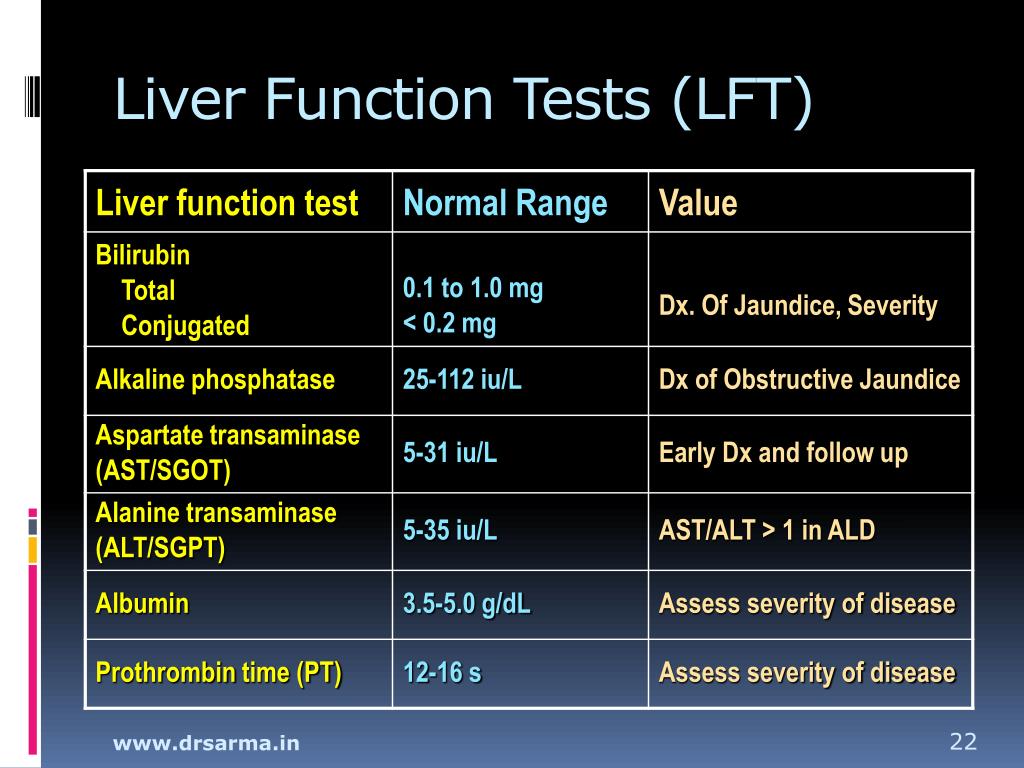 10.1007/BF01324898. [PubMed] [Google Scholar]
10.1007/BF01324898. [PubMed] [Google Scholar]
19. Diehl AM, Potter J, Boitnott J, Van Duyn MA, Herlong HF, Mezey E. Relationship between pyridoxal 5’-phosphate deficiency and aminotransferase levels in alcoholic hepatitis. Gastroenterology. 1984;86:632–636. [PubMed] [Google Scholar]
20. Ruhl CE, Everhart JE. Joint effects of body weight and alcohol on elevated serum alanine aminotransferase in the United States population. Clin Gastroenterol Hepatol. 2005;3:1260–1268. 10.1016/S1542-3565(05)00743-3. [PubMed] [Google Scholar]
21. Alter HJ. To C or not to C: these are the questions. Blood. 1995;85:1681–1695. [PubMed] [Google Scholar]
22. Everhart JE. Digestive diseases in the United States: Epidemiology and impact. Maryland: NIH Publication; 1994. pp. 94–1447. [Google Scholar]
23. Dancygier H, Rogart JN. Approach to the patient with abnormal liver enzymes. In: Dancygier H, editor. Clinical hepatology. Verlag Berlin Heidelberg: Springer; 2010. pp. 533–547.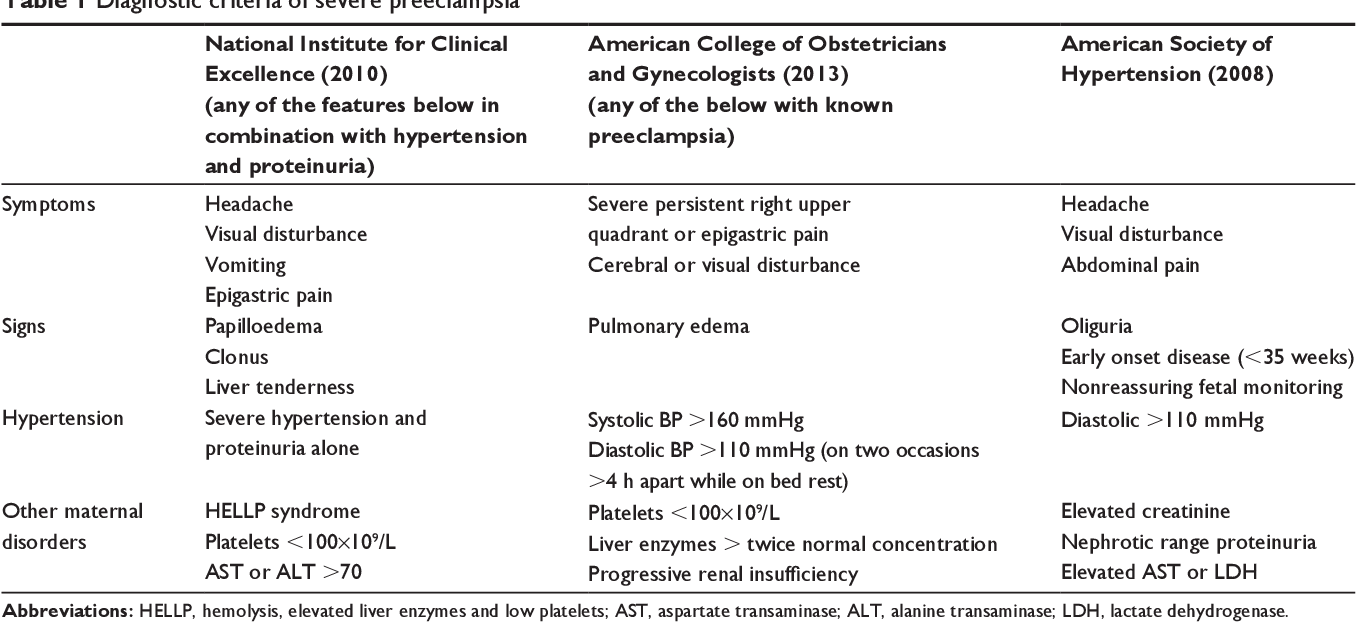 10.1007/978-3-540-93842-2_49. [Google Scholar]
10.1007/978-3-540-93842-2_49. [Google Scholar]
24. Raimondo G, Navarra G, Mondello S, Costantino L, Colloredo G, Cucinotta E, et al. Occult hepatitis B virus in liver tissue of individuals without hepatic disease. J Hepatol. 2008;48:743–746. 10.1016/j.jhep.2008.01.023. [PubMed] [Google Scholar]
25. Schiff ER, de Medina M, Kahn RS. New perspectives in the diagnosis of hepatitis C. Semin Liver Dis. 1999;19(Suppl 1):3–15. [PubMed] [Google Scholar]
26. Halfon P, Bourlière M, Pénaranda G, Khiri H, Ouzan D. Real-time PCR assays for hepatitis C virus (HCV) RNA quantitation are adequate for clinical management of patients with chronic HCV infection. J Clin Microbiol. 2006;44:2507–2511. 10.1128/JCM.00163-06. [PMC free article] [PubMed] [Google Scholar]
27. Giannini EG, Testa R, Savarino V. Liver enzyme alteration: a guide for clinicians. CMAJ. 2005;172:367–379. 10.1503/cmaj.1040752. [PMC free article] [PubMed] [Google Scholar]
28. Williams AL, Hoofnagle JH. Ratio of serum aspartate to alanine aminotransferase in chronic hepatitis.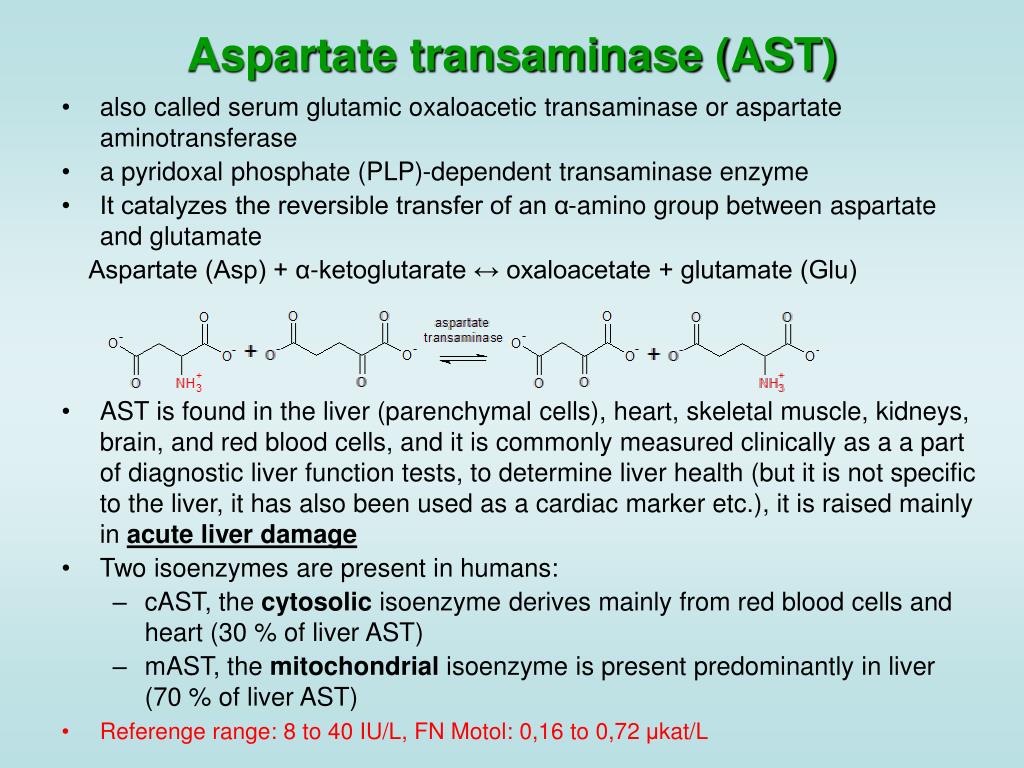 Relationship to cirrhosis. Gastroenterology. 1988;95:734–739. 10.1016/S0016-5085(88)80022-2. [PubMed] [Google Scholar]
Relationship to cirrhosis. Gastroenterology. 1988;95:734–739. 10.1016/S0016-5085(88)80022-2. [PubMed] [Google Scholar]
29. Giannini E, Botta F, Fasoli A, Ceppa P, Risso D, Lantieri PB, et al. Progressive liver functional impairment is associated with an increase in AST/ALT ratio. Dig Dis Sci. 1999;44:1249–1253. 10.1023/A:1026609231094. [PubMed] [Google Scholar]
30. Giannini E, Risso D, Botta F, Chiarbonello B, Fasoli A, Malfatti F, et al. Validity and clinical utility of the aspartate aminotransferase-alanine aminotransferase ratio in assessing disease severity and prognosis in patients with hepatitis C virus-related chronic liver disease. Arch Intern Med. 2003;163:218–224. 10.1001/archinte.163.2.218. [PubMed] [Google Scholar]
31. Giannini E, Botta F, Testa E, Romagnoli P, Polegato S, Malfatti F, et al. The 1-year and 3-month prognostic utility of the AST/ALT ratio and model for end-stage liver disease score in patients with viral liver cirrhosis. Am J Gastroenterol. 2002;97:2855–2860. 10.1111/j.1572-0241.2002.07053.x. [PubMed] [Google Scholar]
2002;97:2855–2860. 10.1111/j.1572-0241.2002.07053.x. [PubMed] [Google Scholar]
32. Sorbi D, Boynton J, Lindor KD. The ratio of aspartate aminotransferase to alanine aminotransferase: potential value in differentiating nonalcoholic steatohepatitis from alcoholic liver disease. Am J Gastroenterol. 1999;94:1018–1022. 10.1111/j.1572-0241.1999.01006.x. [PubMed] [Google Scholar]
33. Bacon BR, Farahvash MJ, Janney CG, Neuschwander-Tetri BA. Nonalcoholic steatohepatitis: an expanded clinical entity. Gastroenterology. 1994;107:1103–1109. 10.1016/0016-5085(94)90235-6. [PubMed] [Google Scholar]
34. Brunt EM. Nonalcoholic steatohepatitis. Semin Liver Dis. 2004;24:3–20. 10.1055/s-2004-823098. [PubMed] [Google Scholar]
35. Diehl AM, Goodman Z, Ishak KG. Alcohollike liver disease in nonalcoholics. A clinical and histologic comparison with alcohol-induced liver injury. Gastroenterology. 1988;95:1056–1062. 10.1016/0016-5085(88)90183-7. [PubMed] [Google Scholar]
36. Angulo P, Keach JC, Batts KP, Lindor KD. Independent predictors of liver fibrosis in patients with nonalcoholic steatohepatitis. Hepatology. 1999;30:1356–1362. 10.1002/hep.510300604. [PubMed] [Google Scholar]
Independent predictors of liver fibrosis in patients with nonalcoholic steatohepatitis. Hepatology. 1999;30:1356–1362. 10.1002/hep.510300604. [PubMed] [Google Scholar]
37. Mofrad P, Contos MJ, Haque M, Sargeant C, Fisher RA, Luketic VA, et al. Clinical and histologic spectrum of nonalcoholic fatty liver disease associated with normal ALT values. Hepatology. 2003;37:1286–1292. 10.1053/jhep.2003.50229. [PubMed] [Google Scholar]
38. Matteoni CA, Younossi ZM, Gramlich T, Boparai N, Liu YC, McCullough AJ. Nonalcoholic fatty liver disease: a spectrum of clinical and pathological severity. Gastroenterology. 1999;116:1413–1419. 10.1016/S0016-5085(99)70506-8. [PubMed] [Google Scholar]
39. Eriksson S, Eriksson KF, Bondesson L. Nonalcoholic steatohepatitis in obesity: a reversible condition. Acta Med Scand. 1986;220:83–88. 10.1111/j.0954-6820.1986.tb02733.x. [PubMed] [Google Scholar]
40. Lavine JE. Treatment of obesity-induced steatohepatitis with vitamin E. Gastroenterology. 1998;114:A1284–A1285. 10.1016/S0016-5085(98)85214-1. [Google Scholar]
1998;114:A1284–A1285. 10.1016/S0016-5085(98)85214-1. [Google Scholar]
41. Powell LW, George DK, McDonnell SM, Kowdley KV. Diagnosis of hemochromatosis. Ann Intern Med. 1998;129:925–931. 10.7326/0003-4819-129-11_Part_2-199812011-00002. [PubMed] [Google Scholar]
42. Tavill AS, American Association for the Study of Liver Diseases. American College of Gastroenterology. American Gastroenterological Association Diagnosis and management of hemochromatosis. Hepatology. 2001;33:1321–1328. 10.1053/jhep.2001.24783. [PubMed] [Google Scholar]
43. Guyader D, Jacquelinet C, Moirand R, Turlin B, Mendler MH, Chaperon J, et al. Noninvasive prediction of fibrosis in C282Y homozygous hemochromatosis. Gastroenterology. 1998;115:929–936. 10.1016/S0016-5085(98)70265-3. [PubMed] [Google Scholar]
44. Morrison ED, Kowdley KV. Genetic liver disease in adults. Early recognition of the three most common causes. Postgrad Med. 2000;107:147–159. 10.3810/pgm.2000.02.872. [PubMed] [Google Scholar]
45. Krawitt EL. Autoimmune hepatitis. N Engl J Med. 1996;334:897–903. 10.1056/NEJM199604043341406. [PubMed] [Google Scholar]
Krawitt EL. Autoimmune hepatitis. N Engl J Med. 1996;334:897–903. 10.1056/NEJM199604043341406. [PubMed] [Google Scholar]
46. Manns MP, Bahr MJ. Recurrent autoimmune hepatitis after liver transplantation-when non-self becomes self. Hepatology. 2000;32:868–870. 10.1053/jhep.2000.19149. [PubMed] [Google Scholar]
47. Czaja AJ. Natural history, clinical features, and treatment of autoimmune hepatitis. Semin Liver Dis. 1984;4:1–12. 10.1055/s-2008-1040641. [PubMed] [Google Scholar]
48. Alvarez F, Berg PA, Bianchi FB, Bianchi L, Burroughs AK, Cancado EL, et al. International Autoimmune Hepatitis Group Report: review of criteria for diagnosis of autoimmune hepatitis. J Hepatol. 1999;31:929–938. 10.1016/S0168-8278(99)80297-9. [PubMed] [Google Scholar]
49. Limdi JK, Hyde GM. Evaluation of abnormal liver function tests. Postgrad Med J. 2003;79:307–312. 10.1136/pmj.79.932.307. [PMC free article] [PubMed] [Google Scholar]
50. Bardella MT, Vecchi M, Conte D, Del Ninno E, Fraquelli M, Pacchetti S, et al.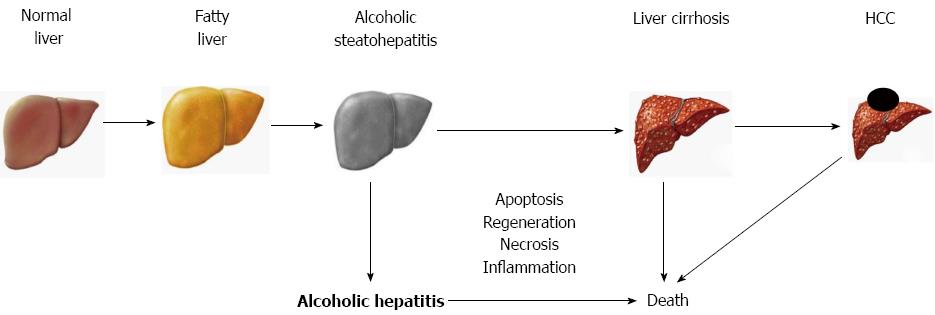 Chronic unexplained hypertransaminasemia may be caused by occult celiac disease. Hepatology. 1999;29:654–657. 10.1002/hep.510290318. [PubMed] [Google Scholar]
Chronic unexplained hypertransaminasemia may be caused by occult celiac disease. Hepatology. 1999;29:654–657. 10.1002/hep.510290318. [PubMed] [Google Scholar]
51. Lo Iacono O, Petta S, Venezia G, Di Marco V, Tarantino G, Barbaria F, et al. Anti-tissue transglutaminase antibodies in patients with abnormal liver tests: is it always coeliac disease? Am J Gastroenterol. 2005;100:2472–2477. 10.1111/j.1572-0241.2005.00244.x. [PubMed] [Google Scholar]
52. Volta U, De Franceschi L, Lari F, Molinaro N, Zoli M, Bianchi FB. Coeliac disease hidden by cryptogenic hypertransaminasaemia. Lancet. 1998;352:26–29. 10.1016/S0140-6736(97)11222-3. [PubMed] [Google Scholar]
53. Farrell RJ, Kelly CP. Diagnosis of celiac sprue. Am J Gastroenterol. 2001;96:3237–3246. 10.1111/j.1572-0241.2001.05320.x. [PubMed] [Google Scholar]
54. Lee WM. Drug-induced hepatotoxicity. N Engl J Med. 2003;349:474–485. 10.1056/NEJMra021844. [PubMed] [Google Scholar]
55. Fogden E, Neuberger J. Alternative medicines and the liver. Liver Int. 2003;23:213–220. 10.1034/j.1600-0676.2003.00843.x. [PubMed] [Google Scholar]
Liver Int. 2003;23:213–220. 10.1034/j.1600-0676.2003.00843.x. [PubMed] [Google Scholar]
56. Shad JA, Chinn CG, Brann OS. Acute hepatitis after ingestion of herbs. South Med J. 1999;92:1095–1097. 10.1097/00007611-199911000-00011. [PubMed] [Google Scholar]
57. Kessler WR, Cummings OW, Eckert G, Chalasani N, Lumeng L, Kwo PY. Fulminant hepatic failure as the initial presentation of acute autoimmune hepatitis. Clin Gastroenterol Hepatol. 2004;2:625–631. 10.1016/S1542-3565(04)00246-0. [PubMed] [Google Scholar]
58. Whitehead MW, Hawkes ND, Hainsworth I, Kingham JG. A prospective study of the causes of notably raised aspartate aminotransferase of liver origin. Gut. 1999;45:129–133. 10.1136/gut.45.1.129. [PMC free article] [PubMed] [Google Scholar]
59. Seeto RK, Fenn B, Rockey DC. Ischemic hepatitis: clinical presentation and pathogenesis. Am J Med. 2000;109:109–113. 10.1016/S0002-9343(00)00461-7. [PubMed] [Google Scholar]
60. Fuchs S, Bogomolski-Yahalom V, Paltiel O, Ackerman Z. Ischemic hepatitis: clinical and laboratory observations of 34 patients. J Clin Gastroenterol. 1998;26:183–186. 10.1097/00004836-199804000-00007. [PubMed] [Google Scholar]
Ischemic hepatitis: clinical and laboratory observations of 34 patients. J Clin Gastroenterol. 1998;26:183–186. 10.1097/00004836-199804000-00007. [PubMed] [Google Scholar]
61. Singer AJ, Carracio TR, Mofenson HC. The temporal profile of increased transaminase levels in patients with acetaminophen-induced liver dysfunction. Ann Emerg Med. 1995;26:49–53. 10.1016/S0196-0644(95)70237-7. [PubMed] [Google Scholar]
62. Sellers EM, Freedman F. Treatment of acetaminophen poisoning. Can Med Assoc J. 1981;125:827–829. [PMC free article] [PubMed] [Google Scholar]
63. Marcellin P. Hepatitis C: the clinical spectrum of the disease. J Hepatol. 1999;31(Suppl 1):9–16. 10.1016/S0168-8278(99)80368-7. [PubMed] [Google Scholar]
64. Wedemeyer H, Jäckel E, Wiegand J, Cornberg M, Manns MP. Whom? When? How? Another piece of evidence for early treatment of acute hepatitis C. Hepatology. 2004;39:1201–1203. 10.1002/hep.20221. [PubMed] [Google Scholar]
65. Roberts EA, Schilsky ML. Division of Gastroenterology and Nutrition, Hospital for Sick Children, Toronto, Ontario, Canada. A practice guideline on Wilson disease. Hepatology. 2003;37:1475–1492. 10.1053/jhep.2003.50252. [PubMed] [Google Scholar]
Division of Gastroenterology and Nutrition, Hospital for Sick Children, Toronto, Ontario, Canada. A practice guideline on Wilson disease. Hepatology. 2003;37:1475–1492. 10.1053/jhep.2003.50252. [PubMed] [Google Scholar]
66. Fortson WC, Tedesco FJ, Starnes EC, Shaw CT. Marked elevation of serum transaminase activity associated with extrahepatic biliary tract disease. J Clin Gastroenterol. 1985;7:502–505. 10.1097/00004836-198512000-00012. [PubMed] [Google Scholar]
67. Anciaux ML, Pelletier G, Attali P, Meduri B, Liguory C, Etienne JP. Prospective study of clinical and biochemical features of symptomatic choledocholithiasis. Dig Dis Sci. 1986;31:449–453. 10.1007/BF01320306. [PubMed] [Google Scholar]
68. Ferenci P, Caca K, Loudianos G, Mieli-Vergani G, Tanner S, Sternlieb I, et al. Diagnosis and phenotypic classification of Wilson disease. Liver Int. 2003;23:139–142. 10.1034/j.1600-0676.2003.00824.x. [PubMed] [Google Scholar]
69. Lindor KD, Gershwin ME, Poupon R, Kaplan M, Bergasa NV, Heathcote EJ, et al. Primary biliary cirrhosis. Hepatology. 2009;50:291–308. 10.1002/hep.22906. [PubMed] [Google Scholar]
Primary biliary cirrhosis. Hepatology. 2009;50:291–308. 10.1002/hep.22906. [PubMed] [Google Scholar]
70. Lee YM, Kaplan MM. Primary sclerosing cholangitis. N Engl J Med. 1995;332:924–933. 10.1056/NEJM199504063321406. [PubMed] [Google Scholar]
71. Angulo P, Lindor KD. Primary sclerosing cholangitis. Hepatology. 1999;30:325–332. 10.1002/hep.510300101. [PubMed] [Google Scholar]
72. Chapman R, Fevery J, Kalloo A, Nagorney DM, Boberg KM, Shneider B, et al. Diagnosis and management of primary sclerosing cholangitis. Hepatology. 2010;51:660–678. 10.1002/hep.23294. [PubMed] [Google Scholar]
Liver function test: Purpose, types, and results
Liver function tests, commonly known as a liver panel, are blood tests used to measure liver performance through the analysis of various substances found in the blood, such as proteins, enzymes, and bilirubin. The tests can provide important insight into problems with the liver, such as inflammation, scarring, or liver damage. They are often used to diagnose and monitor diseases, including hepatitis and cirrhosis.
They are often used to diagnose and monitor diseases, including hepatitis and cirrhosis.
There are a variety of different types of liver function tests, and each one screens for different aspects of liver health. Here’s a look at the most common types of liver function tests, as well as their normal ranges and what abnormal results may mean.
What is a liver function test?
A liver function test is a blood test used to measure various substances in the blood that are indicative of hepatic function. In a single appointment, your healthcare provider can gain a better overall picture of your liver health and make diagnoses or recommendations for further testing based on the results.
During the test, a small blood sample is taken from a vein in the arm using a small needle. The sample is then sent to the laboratory for analysis, and the results will be available within several days, or in some cases even sooner. Although your healthcare provider may recommend that you fast for 10 to 12 hours prior to the test, liver function tests generally don’t require any other preparation.
What does a liver function test show?
Your healthcare provider may recommend a liver function test for a variety of reasons. Generally, the test is ordered if you have any symptoms or signs that might indicate a problem with your liver, such as:
- Yellowing of the skin and eyes, a condition known as jaundice
- Upper abdominal pain or swelling
- Nausea or vomiting
- Fatigue
- Loss of appetite
- Dark urine or light-colored stool
In some cases, your healthcare provider may order a liver function test as part of routine screening or to monitor the progression of an existing condition.
“It’s generally recommended to get a liver panel if you’re diagnosed with obesity or being overweight, are a heavy alcohol drinker, have been exposed to hepatitis viruses, or have a genetic disposition for liver disease,” says Edward Salko, MD, a board-certified physician and a medical director at PersonaLabs.
The test results of a liver panel can also be used to help diagnose a variety of conditions, such as:
- Cirrhosis
- Hepatitis A, B, and C
- Liver cancer
- Nonalcoholic fatty liver disease
- Wilson disease
- Celiac disease
What’s included in a liver panel?
Based on your specific medical history and symptoms, your healthcare provider may order a number of different tests, explains Dr. Salko. Some common tests included in a liver function panel include:
- Alkaline phosphatase (ALP)
- Alanine transaminase (ALT), also known as alanine aminotransferase
- Aspartate aminotransferase (AST), also known as aspartate transaminase
- Gamma-glutamyl transferase (GGT), also known as gamma-glutamyl transpeptidase
- Albumin
- Total protein
- Bilirubin
- Lactate dehydrogenase (LDH)
- Prothrombin time (PT)
Liver function test normal range
The liver plays a role in nearly every bodily process, including metabolism, digestion, and immunity. As such, a healthy and properly functioning liver is important for overall health.
As such, a healthy and properly functioning liver is important for overall health.
However, there are several factors that can affect how the liver functions, including age, sex, pregnancy, and certain medications, explains Dr. Salko. “Alcohol use, frequent eating out, and smoking cigarettes can also have adverse effects on the liver,” he adds.
Liver enzyme test
Liver enzyme lab tests measure the levels of certain enzymes in the blood that are released by liver cells. These enzymes help to speed up certain chemical reactions within the body, such as breaking down proteins and fats, helping blood clot, and fighting infection. Most commonly, doctors will order a test for four different enzymes:
- Alkaline phosphatase (ALP): 30–120 U/L
- Alanine transaminase (ALT): 10–40 U/L
- Aspartate aminotransferase (AST): 10–40 U/L
- Gamma-glutamyl transferase (GGT): 8–40 U/L for females, 9–50 U/L for males
“Elevations in both AST and ALT often mean that the liver is inflamed. The most common causes would include alcohol use, medications, fatty liver disease, and recent or current infections, such as COVID, mono, or other viruses,” says Max Pitman, MD, a medical director at Salvo Health and board-certified physician at Summit Health in Brooklyn, New York.
The most common causes would include alcohol use, medications, fatty liver disease, and recent or current infections, such as COVID, mono, or other viruses,” says Max Pitman, MD, a medical director at Salvo Health and board-certified physician at Summit Health in Brooklyn, New York.
Abnormal levels of ALP could be an indicator of chronic liver disease, bone disease, or chronic kidney disease. However, additional laboratory tests are often needed to make the diagnosis.
“Elevated GGT can be seen in many conditions such as alcohol use, gallstone or gallbladder issues, and medication use,” Dr. Pitman says. “Elevated GGT on its own is not cause for immediate concern but should be evaluated in the context of other abnormal liver tests. Small increases in liver enzymes (two to five times the upper limit of normal) are often temporary and not cause for excessive concern but should be followed up to make sure that they decrease to the normal level over time.”
Albumin
Albumin is a protein produced in the liver, and it plays an important role in transporting various substances throughout the body, including hormones and medications.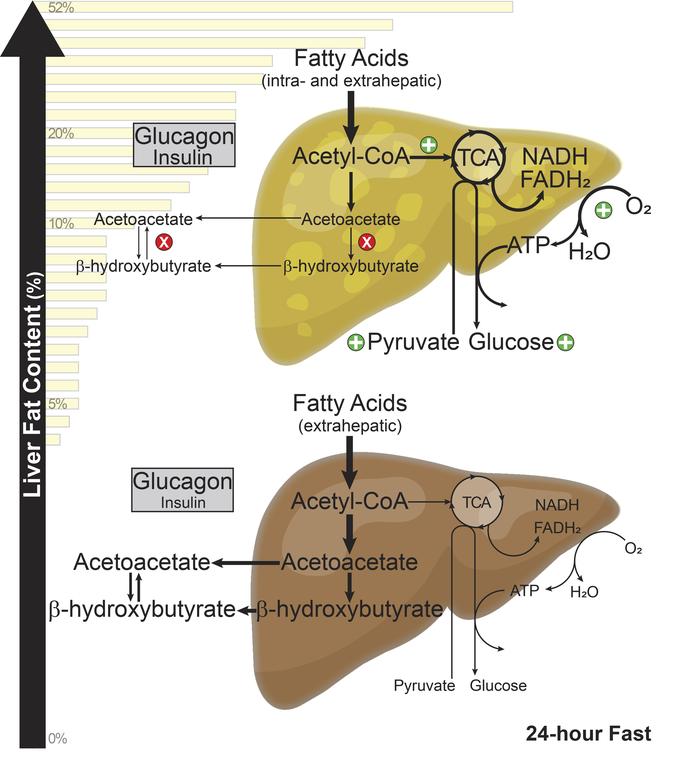 An albumin test measures the levels of serum albumin, with a normal range being 3.5–5.5 g/dL.
An albumin test measures the levels of serum albumin, with a normal range being 3.5–5.5 g/dL.
Elevated levels of albumin may be a sign of dehydration, while low levels can be indicative of liver or kidney disease. Dr. Pitman adds that low albumin can also be a sign of malnutrition or chronic inflammation.
Total protein test
The total protein test measures the total amount of proteins in your blood, including albumin and globulins. A normal range is typically 5.5–9.0 g/dL.
“Low total protein is a sign of malnutrition or chronic inflammation,” says Dr. Pitman. “Elevated total protein, particularly if it’s a very high level for a sustained period of time, should be checked out by your primary care physician or hematologist to make sure there is no underlying condition contributing to excess protein in the blood.”
Bilirubin test
Bilirubin is a yellow substance naturally made as your body breaks down old red blood cells. A healthy liver will automatically remove the majority of the bilirubin from your body as a waste product. However, if the liver is not functioning properly, bilirubin will build up in the bloodstream and cause the skin to yellow, a condition known as jaundice.
However, if the liver is not functioning properly, bilirubin will build up in the bloodstream and cause the skin to yellow, a condition known as jaundice.
The normal range of serum bilirubin levels is 0.3–1.0 mg/dL. If your bilirubin levels exceed this range, it may be a sign of a liver condition, but this isn’t always the case—certain medications and foods can also elevate bilirubin levels.
LDH test
LDH, which plays an important role in energy production, is an enzyme present in the cells of almost all organs and tissue. A normal range for LDH levels is 80–225 U/L.
“Many different types of conditions can cause elevated LDH,” Dr. Pitman explains. “It’s not specific to any one condition. Some of these conditions involve inflammation, like infections, or rapid cell turnover, like in malignancy or certain types of anemia. Many other conditions can cause it as well, including autoimmune conditions, drug reactions, and much more.”
Dr. Pitman adds that a high LDH on its own should not cause concern, but it should be evaluated in context with other symptoms and tests.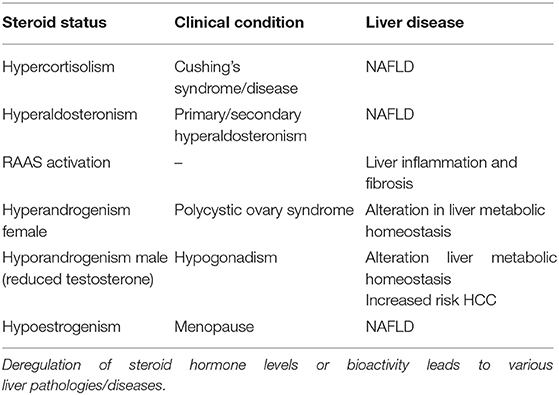
Prothrombin time (PT) test
Prothrombin time refers to the time it takes for the liquid portion of your blood, also known as plasma, to clot. A normal prothrombin time should be within 11-13 seconds.
“Elevated PT means that blood clotting is not occurring as rapidly as normal and can indicate a risk of excessive bleeding,” Dr. Pitman says. “This is commonly seen in people who are taking blood thinners such as coumadin or Jantoven. It can also occur as a result of low vitamin K levels, certain inherited bleeding conditions, or in advanced liver disease, such as liver cirrhosis or acute liver failure.”
Next steps: What if I’m diagnosed with a liver condition?
Abnormal liver function test results can indicate a variety of liver conditions. While many of the symptoms of liver conditions are similar, the treatment will depend on the specific diagnosis.
It’s important to address any and all concerns you may have with your healthcare provider, as they can provide you with the best information and advice on how to manage your condition, as well as potential side effects of each treatment option. Additionally, Dr. Salko advises that diet and lifestyle changes may help improve overall liver function, as well as have a positive impact on other aspects of your mental and physical health.
Additionally, Dr. Salko advises that diet and lifestyle changes may help improve overall liver function, as well as have a positive impact on other aspects of your mental and physical health.
preparation, table of normal values, interpretation
Biochemical blood test is a detailed study of the patient’s venous blood, conducted to assess the functioning of internal organs, detect deficiency of vitamins, enzymes, macro- and microelements, as well as to diagnose metabolic pathology. Blood biochemistry is more indicative than a general clinical analysis; the results of the analysis make it possible to detect many diseases at an early stage. That is why this study is recommended to be carried out not only as prescribed by a doctor, but also for preventive purposes at least once a year. The results of a biochemical blood test include many interconnected indicators and a doctor should be involved in their interpretation – self-medication is dangerous for your health!
How to prepare for the procedure?
- Blood sampling for biochemistry is always performed on an empty stomach, most often between 8 and 11 am.
 On the day of the procedure, non-carbonated water is allowed, and the day before the procedure, heavy food, carbonated drinks, strong coffee, tea and alcohol should be excluded from the diet.
On the day of the procedure, non-carbonated water is allowed, and the day before the procedure, heavy food, carbonated drinks, strong coffee, tea and alcohol should be excluded from the diet. - Do not smoke during the last hour before donating blood.
- Immediately before the procedure, try to avoid physical and emotional stress, the last 10-20 minutes it is better to just sit near the manipulation room.
- If the date of the biochemical blood test falls on the period of taking a course of drug treatment or a course of physiotherapy, then it is worth consulting with your doctor – he may recommend rescheduling the study to another time or interrupting the course of treatment for several days.
Interpretation of the results of a biochemical blood test
New generation laboratory analyzers are able to provide results of the study within two hours after blood sampling. As a rule, the patient receives the results within 2-3 days in the form of a printed or electronic table, which lists the studied indicators, their values and reference (average) normal ranges. Different laboratories offer different amounts of data, in the same article the most commonly studied blood parameters will be described.
Different laboratories offer different amounts of data, in the same article the most commonly studied blood parameters will be described.
Proteins
| Designation | Norma (women) | Norma (men) | Units | |
|---|---|---|---|---|
| Albumin | ALB | < 14 years: 38-54 14-60 years: 35-50 > 60 years: 34-38 | g/l | |
| Glycated hemoglobin | HbA1c, A1c, glycosylated hemoglobin | < 5.7 | % | |
| Total protein | TP, TProt, Serum | < 1 year: 47-72 1-4 years: 61-75 5-7 years: 52-78 8-15 years: 58-76 > 15 years: 64-83 | g/l | |
| C-reactive protein | CRP, SRP | < 0.5 | g/l | |
| Iron-binding capacity of serum | TIBC, IBC, OJSS | 45.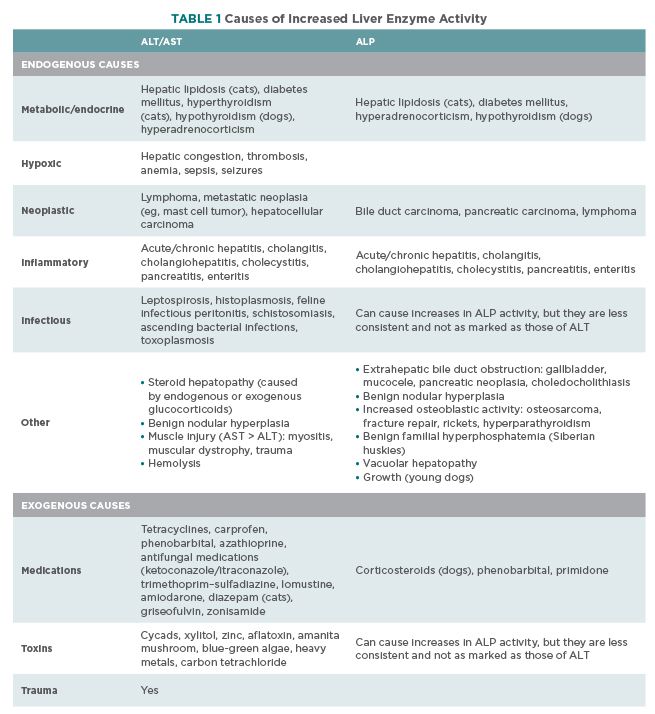 3–77.1 3–77.1 | µmol/l | |
| Myoglobin | Myoglobin | 12–76 | 19-92 | µg/l |
| Transferrin | Tf | 2.2-2.4 | 2-4 | g/l |
| Ferritin | Ferritin | 13–150 | 30-400 | µg/l |
Total protein characterizes the state of protein metabolism and reveals dysproteinemia (change in the quantitative ratio of protein fractions in blood serum). Decreased values may indicate malnutrition, liver disease, burns, trauma, and surgery, while elevated values may indicate an infectious disease, non-infectious hepatitis, autoimmune disease, dehydration, or may be caused by diarrhea and vomiting.
Protein albumin occupies up to 65% of the blood plasma volume, is produced by the liver and performs the most important function of transporting many biologically active substances. The reasons for the decrease in albumin concentration coincide with those for the total protein. The value increases quite rarely, for example, with dehydration, hemoconcentration, or as a result of taking anabolic steroids.
The reasons for the decrease in albumin concentration coincide with those for the total protein. The value increases quite rarely, for example, with dehydration, hemoconcentration, or as a result of taking anabolic steroids.
The iron protein myoglobin is being investigated primarily for the early diagnosis of myocardial infarction. A high concentration of myoglobin may indicate myocardial infarction, heart failure, acute kidney injury, the effects of thermal burns, electric shock. Low myoglobin accompanies the course of rheumatoid arthritis and poliomyelitis.
The value of glycated or glycosylated hemoglobin is very important for patients with diabetes mellitus, and is also used for its diagnosis. Glycated hemoglobin gives an idea of the average level of glucose in the blood over a long period of time (1–2 months). If the concentration of this protein fraction does not exceed 5.7% of the total volume of hemoglobin in the blood, then we can speak of a compensated state. Values in the range of 5.7–6.4% indicate a risk of developing diabetes mellitus, above 6.4% indicate severe decompensated diabetes.
Values in the range of 5.7–6.4% indicate a risk of developing diabetes mellitus, above 6.4% indicate severe decompensated diabetes.
C-reactive protein acts as an indicator of the inflammatory process in the body. Exceeding the threshold of 0.5 g/l indicates acute inflammation or malignancy. Also, this parameter is important for evaluating the effectiveness of antibacterial and anti-inflammatory therapy.
The studied values of transferrin , ferritin and iron-binding capacity of serum allow diagnosing the pathology of iron metabolism in the blood. Transferrin is the main carrier of iron, an increase in its concentration, as a rule, indicates the development of iron deficiency anemia, and a decrease indicates infections, cirrhosis of the liver, anemia of a different etiology, or protein starvation. With iron deficiency anemia, ferritin, on the contrary, decreases, and its increase indicates inflammatory processes, liver disease, or oncopathology.
Lipids
| Designation | Norma (women) | Norma (men) | Units | |
|---|---|---|---|---|
| Triglycerides | TRIG | < 15 years old: 0.40–1.48 15–30 years old: 0.4–1.63 30–55 years old: 0.44–2.63 > 55 years old: 0.62–2.71 | < 15 years old: 0.34-1.41 15-30 years old: 0.45-2.81 30-55 years old: 0.56-3.61 > 55 years old: 0.65-3.29 | mmol/l |
| Total cholesterol | CHOL | 5.2 | mmol/l | |
| HDL cholesterol | HDL, HDL-C | 1.03–1.55 | mmol/l | |
| LDL cholesterol | LDL, LDL-C | 0–3.3 | mmol/l | |
Total cholesterol is used to detect primary and secondary disorders of lipid metabolism, assess the likelihood of developing atherosclerosis, and also to evaluate the effectiveness of the treatment of atherogenic disorders of lipid metabolism.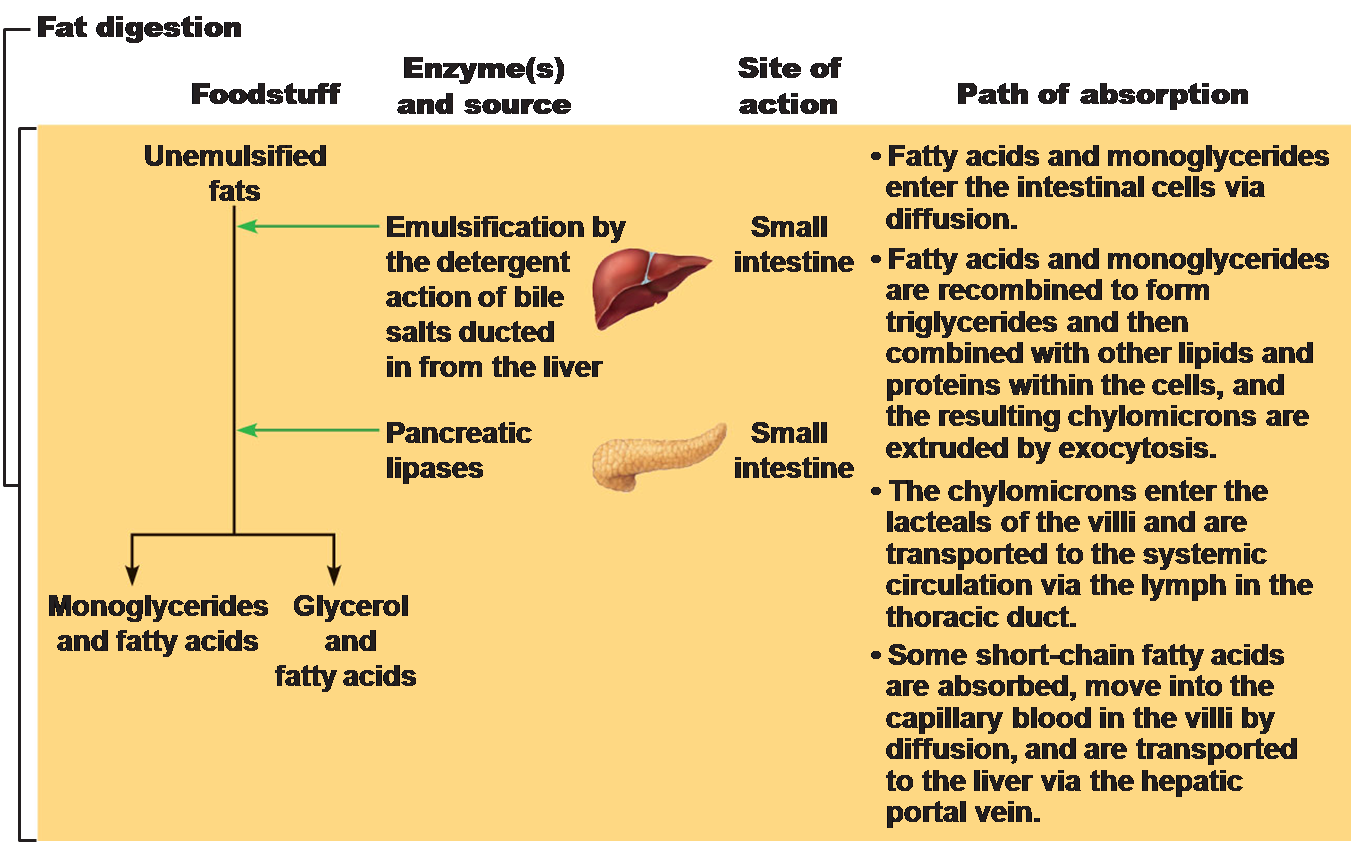 A decrease in the value is caused by cachexia, starvation, malabsorption, severe acute diseases, liver failure, hyperthyroidism, and an increase is caused by primary and secondary dyslipoproteinemia. Dangerous consequences of low cholesterol are psychophysiological disorders and reproductive dysfunction, high – diabetes mellitus and atherosclerosis. Biochemical blood test for triglycerides (products of carbohydrate metabolism in the liver) pursues the same tasks, the reasons for the increase and decrease in their concentration also coincide with total cholesterol.
A decrease in the value is caused by cachexia, starvation, malabsorption, severe acute diseases, liver failure, hyperthyroidism, and an increase is caused by primary and secondary dyslipoproteinemia. Dangerous consequences of low cholesterol are psychophysiological disorders and reproductive dysfunction, high – diabetes mellitus and atherosclerosis. Biochemical blood test for triglycerides (products of carbohydrate metabolism in the liver) pursues the same tasks, the reasons for the increase and decrease in their concentration also coincide with total cholesterol.
High-density lipoprotein cholesterol and low-density lipoprotein (HDL-C and LDL-C, respectively) are examined and interpreted in combination with total cholesterol and triglycerides for a more accurate diagnosis. HDL-C increases with primary biliary cirrhosis, hepatitis, alcoholism, or its increase may be genetically determined. In patients with atherosclerosis, decompensated diabetes mellitus, chronic kidney disease, cholestasis, the value of HDL-C decreases. Low-density lipoproteins are involved in the processing and excretion of fats, a decrease in their concentration may indicate the development of chronic anemia, Raynaud’s syndrome or myeloma, and an increase in hypothyroidism, nephrotic syndrome, diabetes mellitus, porphyria, Cushing’s syndrome, the risk of atherosclerosis.
Low-density lipoproteins are involved in the processing and excretion of fats, a decrease in their concentration may indicate the development of chronic anemia, Raynaud’s syndrome or myeloma, and an increase in hypothyroidism, nephrotic syndrome, diabetes mellitus, porphyria, Cushing’s syndrome, the risk of atherosclerosis.
Carbohydrates
| Designation | Norma (women) | Norma (men) | Units | |
|---|---|---|---|---|
| Glucose | GLUC | 3.3-5.5 | mmol/l | |
| Fructosamine | FRA | 0–285 | µmol/l | |
Glucose is the main source of energy for all cells and tissues of the human body and, in particular, its only source for the brain. The value of glucose in the results of biochemical analysis reflects the level of sugar in the blood. If this value is increased, then there is a risk of developing diabetes mellitus, damage to the central nervous system, and hormonal disorders. Glucose “falls” with the formation of tumors in the pancreas, with liver and adrenal insufficiency, hypothyroidism, malnutrition, or due to insulin intake.
Glucose “falls” with the formation of tumors in the pancreas, with liver and adrenal insufficiency, hypothyroidism, malnutrition, or due to insulin intake.
The value of fructosamine reflects the fluctuation in blood glucose levels during the 2-3 weeks prior to the test. If its concentration exceeds 280–285 µmol / l, then the doctor considers the likelihood of developing diabetes.
Inorganic substances and vitamins
| Designation | Norma (women) | Norma (men) | Units | |
|---|---|---|---|---|
| Vitamin B12 | 208–963.5 | pg/ml | ||
| Iron | Fe, IRON | < 2 years: 7-18 2-14 years: 9-22 > 14 years: 9-30 | < 2 years: 7-18 2-14 years: 9-22 > 14 years: 11-31 | µmol/l |
| Potassium | K | 3.5–5 | mmol/l | |
| Calcium | Ca | 2. 25–2.5 25–2.5 | mmol/l | |
| Magnesium | Mg | 0.75–1.25 | mmol/l | |
| Sodium | Na | 136–145 | mmol/l | |
| Phosphorus | P | < 2 years old: 1.45–2.16 2–12 years old: 1.45–1.78 12–60 years old: 0.87–1.45 > 60 years old: 0.90–1.32 | < 2 years: 1.45-2.16 2-12 years: 1.45-1.78 12-60 years: 0.87-1.45 > 60 years: 0.74-1.2 | mmol/l |
| Chlorine | Cl | 98–107 | mmol/l | |
Vitamin B12 in the human body is involved, in particular, in the production of red blood cells. High levels of this vitamin can indicate liver disease, kidney disease, or leukemia. Diseases of parasitic etiology, inflammatory processes in the gastrointestinal tract and adherence to a vegetarian (vegan) diet, on the contrary, lead to a decrease in the level of vitamin B12 in the blood.
In one of the previous paragraphs it was mentioned that iron takes part in the process of transporting oxygen. Its deficiency is usually explained by malnutrition or metabolic disorders, and its excess – by functional disorders of the intestine.
Potassium is responsible for the regulation of water balance and normalizes the heart rhythm. Potassium deficiency occurs due to malnutrition or malnutrition, vomiting, renal failure, Cushing’s syndrome, osmotic diuresis, chronic kidney disease, and also accompanies long-term use of steroid drugs. Potassium also increases with acute dehydration, extensive injuries and burns, chronic adrenal insufficiency, diabetic coma, or as a result of taking potassium-sparing diuretics.
Calcium is involved in the formation of bone tissue, it is extremely important for the normal functioning of muscles, nerves, heart muscle and blood vessels. Low blood calcium values indicate vitamin D deficiency, functional kidney disease, pancreatitis, impaired magnesium metabolism, or hypoparathyroidism. An increase in calcium levels accompanies hyperparathyroidism or is a symptom of oncopathology.
An increase in calcium levels accompanies hyperparathyroidism or is a symptom of oncopathology.
Magnesium performs the function of intracellular metabolism and transmission of impulses from nerve endings to muscles. Malnutrition, malabsorption, prolonged diarrhea, colitis, enterocolitis and dyspepsia reduce the concentration of magnesium in the blood. Functional disorders of the kidneys, hypothyroidism, lactic acidosis and neoplasms lead to its increase.
Along with magnesium, sodium , also involved in calcium metabolism, is responsible for the transmission of impulses to the muscles. The reason for the decrease in sodium can be hypothyroidism, Addison’s disease, diabetes mellitus, kidney and gastrointestinal tract diseases, congestive heart failure, taking gentamicin, less often – Parkon’s syndrome or hypercalciuria. High levels of sodium in the results of biochemistry indicate dehydration, oversaturation of the body with salts, diabetes insipidus or kidney disease with oliguria.
Normal functioning of the nervous and musculoskeletal systems is impossible without a sufficient amount of phosphorus in the body. The content of phosphorus in the blood increases with hypoparathyroidism, an excess of vitamin D, rhabdomyolysis, bone diseases or improper diet, less often with acromegaly. On the other hand, hypovitaminosis D, hyperparathyroidism, kidney transplantation, intravenous glucose infusions, respiratory alkalosis cause a decrease in the concentration of phosphorus in the blood.
Chlorine performs the functions of maintaining the acid-base balance of the blood and osmotic pressure. The most obvious causes of a decrease in chlorine levels are profuse sweating, vomiting, diarrhea, incorrect treatment with diuretics, less commonly, a decrease is caused by nephrotic syndrome and hypokalemic metabolic syndrome. An excess of chlorine in the blood can be a consequence of dehydration, swelling, alkalosis and decompensation of cardiac activity.
Example of blood chemistry results
Low molecular weight nitrogenous substances
| Designation | Norma (women) | Norma (men) | Units | |
|---|---|---|---|---|
| Creatinine | CREA | 53–97 | 62-115 | µmol/l |
| Uric acid | UA | < 14 years: 120-320 > 14 years: 150-350 | < 14 years: 120-320 > 14 years: 210-420 | µmol/l |
| Urea | UREA | 2.2-6.7 | 3.8–7.3 | mmol/l |
Urea and creatinine are studied in combination, their values reflect the functional state of the patient’s kidneys, in particular, the degree of impairment of filtration and excretory functions. High values indicate kidney problems, but may be due to excessive exercise, a high-protein diet, prolonged fasting, or thyroid disease.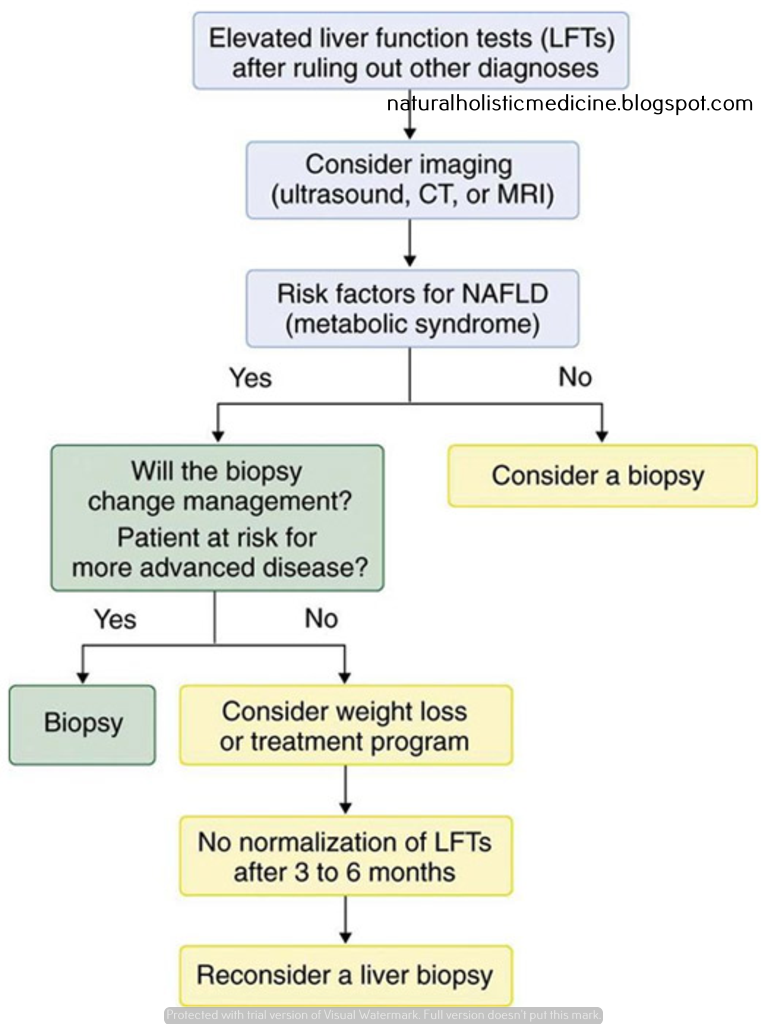 Low urea values may be due to a low protein diet, pregnancy, and liver disease.
Low urea values may be due to a low protein diet, pregnancy, and liver disease.
The level of uric acid as an auxiliary parameter reflects the body’s ability to remove waste products from the processes of nucleic acid and purine metabolism. It is of particular diagnostic interest in patients with gout. The main causes of increased uric acid are gout and alcoholism, less often – the pathology of the kidneys and liver. Low values of uric acid in the results of a biochemical blood test are much less common and usually indicate malnutrition or malnutrition.
Pigments
| Designation | Norma (women) | Norma (men) | Units | |
|---|---|---|---|---|
| Total bilirubin | BILT | 3.4–17.1 | µmol/l | |
| Direct bilirubin | BILD, D-BIL | 0–7.9 | µmol/l | |
| Bilirubin indirect | ID-BIL | BILT – BILD | µmol/l | |
Yellow pigment bilirubin begins to accumulate in the blood in diseases and hereditary pathologies of the liver, biliary tract, for example, Gilbert’s syndrome. Indirect bilirubin can also be elevated in some anemias and malaria.
Indirect bilirubin can also be elevated in some anemias and malaria.
Enzymes
| Designation | Norma (women) | Norma (men) | Units | |
|---|---|---|---|---|
| Alanine aminotransferase | ALT | < 31 | < 41 | units/l |
| Amylase | AMY | 28-100 | units/l | |
| Pancreatic amylase | AMY-P | 0–50 | units/l | |
| Aspartate aminotransferase | AST | < 32 | < 40 | units/l |
| Gamma-glutamyltransferase | GGT | 6–42 | 10–71 | units/l |
| Creatine kinase | CK | 0–25 | units/l | |
| Lactate dehydrogenase | LDH | 250 | units/l | |
| Lipase | LIP | 0–190 | units/l | |
| Alkaline phosphatase | ALP | 0–240 | 0–270 | units/l |
| Cholinesterase | CH | 5860–11800 | 5800-14600 | units/l |
Liver enzyme with an unpronounceable name alanine aminotransferase is involved in amino acid metabolism.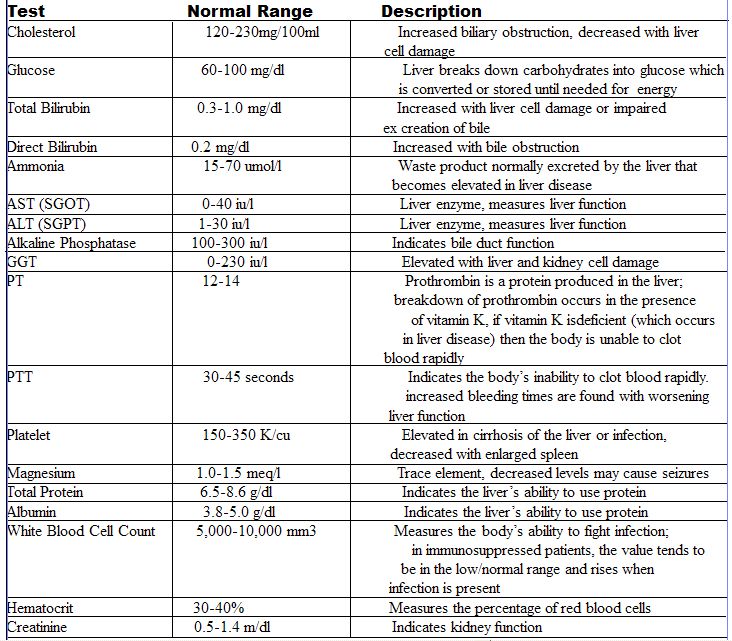 The indicator increases with myocardial infarction, acute hepatitis A and B, and other liver diseases.
The indicator increases with myocardial infarction, acute hepatitis A and B, and other liver diseases.
Enzyme amylase is produced by the salivary glands and pancreas and is responsible for the digestion of carbohydrates. Exceeding the norm by 3-5 times may indicate acute appendicitis, peritonitis, stomach and duodenal ulcers, cholecystitis. In acute pancreatitis or exacerbation of its chronic form, the value of amylase increases by 10–30 times. An increased value of pancreatic amylase allows timely detection of complications of operations on the abdominal organs and diseases of the pancreas.
The concentration of the enzyme aspartate aminotransferase in human blood increases greatly in case of damage to the liver or heart muscle, due to alcohol abuse, the indicators can increase two times relative to the norm.
High values of the enzyme gamma-glutamyltransferase are observed in patients with acute hepatitis, extra- and intrahepatic cholestasis, alcoholism, pancreatic and prostate cancer, primary liver tumors.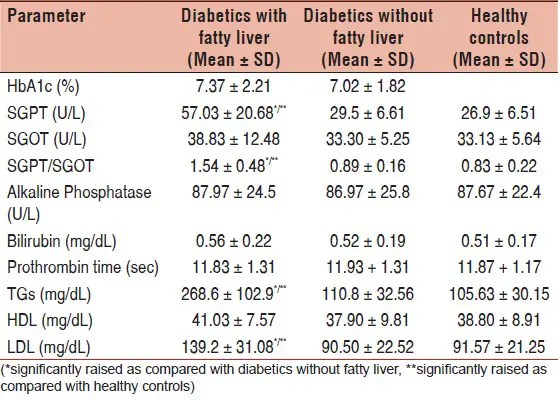
An increase in the concentration of creatine kinase in the blood may indicate myocardial infarction, muscle damage of various origins, and renal failure. Lactate dehydrogenase is increased in diseases of the cardiovascular system, liver and kidneys, as well as in pregnant women. High values of lipase are observed in patients with acute pancreatitis, intestinal infarction, biliary colic, wounds, fractures, and breast cancer. The metabolism of phosphorus in the body is directly related to the content of alkaline phosphatase – its increase accompanies acute viral and alcoholic hepatitis, liver cirrhosis, mononucleosis, liver cancer or liver metastases. Cholinesterase decreases in liver cirrhosis, liver failure, hepatitis, myocardial infarction. The value of cholinesterase is also indicative for patients taking muscle relaxants.
Ryazan State Medical University named after Academician I.
 P. Pavlov
P. Pavlov
Ryazan State Medical University named after academician I.P. Pavlov – official site
Additional professional education (4912) 97-18-37
Additional professional education (4912) 97-18-37
Additional professional education (4912) 97-18-37
Additional professional education (4912) 97-18- 37
Additional professional education (4912) 97-18-37
Additional professional education (4912) 97-18-37
Additional professional education (4912) 97-18-37
Additional professional education (4912) 97-18-37
Additional professional education (4912) 97-18-37
Additional professional education (4912) 97-18-37
University in ratings
9000 2 University ranked
University in rankings
University in rankings
University in rankings
University in rankings
University in rankings
University in rankings
University in ratings
University in ratings
Training operating room WetLab
Training operating room WetLab
Training operating room WetLab
Training operating room WetLab
9000 2 Training OR WetLab
Training OR WetLab
Training OR WetLab
Training OR WetLab
Training operating room WetLab
Training operating room WetLab
Science news in Ryazan State Medical University
Science news at RyazGMU
Science news at RyazGMU
Science news at RyazGMU
Science news at RyazGMU
Science news at RyazGMU
Science news at RyazGMU 90 003
Science news at RyazSMU
Science news at RyazSMU
Science news in RyazGMU
05/30/2023
Admission campaign – 2023
On our website in the section Home / Applicants / Applicants (specialist / bachelor / master) there is a video that details the rules for admission to Ryazan State Medical University.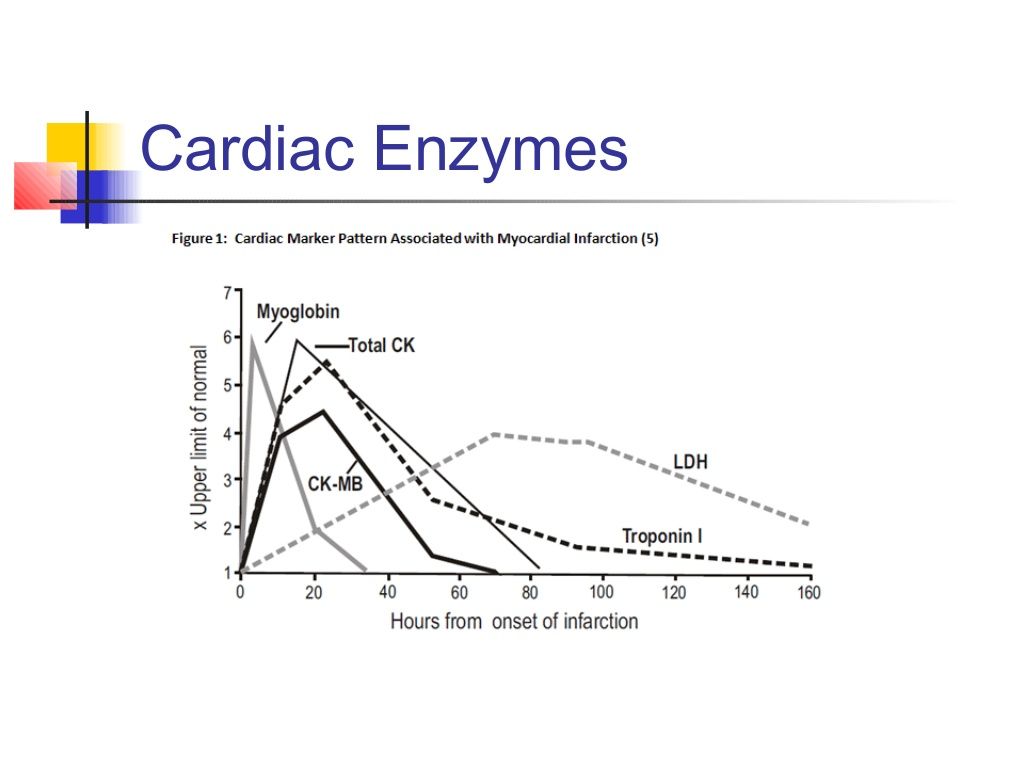
06/08/2023
On the procedure for the work of the commission for the restoration of the number of university students on June 09, 2023
announcement
05/25/2023
Intensive courses to prepare for entrance examinations
We invite you, dear applicants, to take intensive courses to prepare for the entrance exams, conducted by the university itself.
05/18/2023
About the recovery in the number of students
Commission for the restoration of the number of university students will be held on 09June 2023 (Friday) from 10.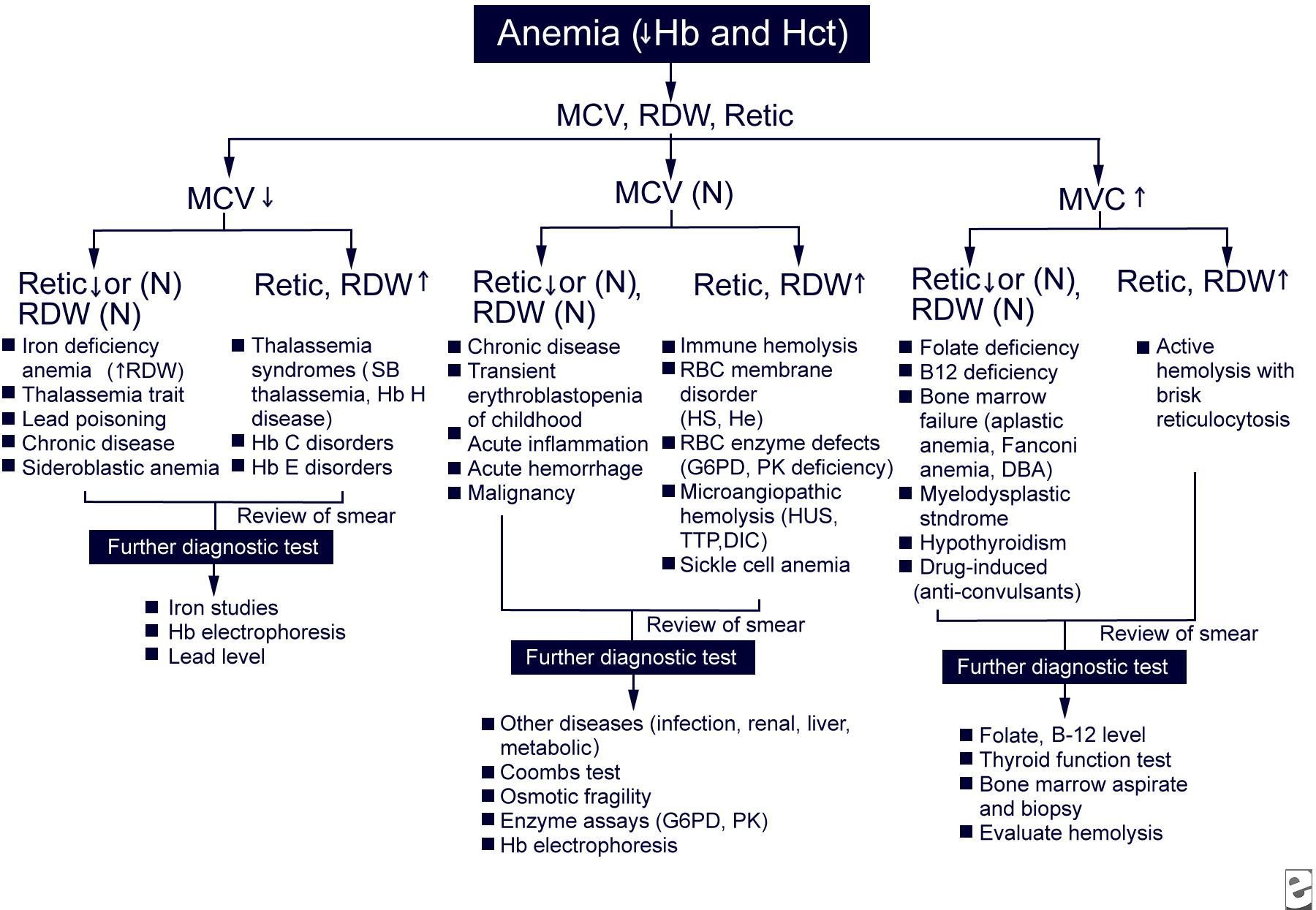 00 at the address: st. Vysokovoltnaya, 9, educational and laboratory building, 3rd floor, office No. 302.
00 at the address: st. Vysokovoltnaya, 9, educational and laboratory building, 3rd floor, office No. 302.
06/08/2023
Commonwealth of graduates of the Ryazan State Medical University
Today we are publishing the history of a medical family, which was sent to us by Irina Alexandrovna Ovchinnikova, a graduate of the Faculty of Medicine in 2004.
06/08/2023
Representative therapeutic forum in Ryazan State Medical University
Opening the First Congress of Therapists of the Central Federal District, the rector of the Ryazan State Medical University, MD. Professor Kalinin Roman Evgenievich noted that every event that the university holds within its walls is obligatory and educational too.
06/08/2023
Two free courses start at Ryazan State Medical University
The university continues to create new socially demanded projects for the residents of the region. We are waiting for everyone who wants to gain new knowledge in order to use it for the benefit of themselves and their loved ones.
06/07/2023
Ryazan State Medical University starts screening the population of the region for orphan pathology
Laboratory and research capabilities of the Ryazan State Medical University will allow screening for the detection of a rare genetic disease.
06/07/2023
RyazGMU in the RAEX-100 rating showed dynamics in 4 indicators
In the published ranking of the best universities in Russia, Ryazan State Medical University ranks 9place among medical schools.
ratings
06/07/2023
To help means to be needed!
The rector of the Ryazan State Medical University Kalinin Roman Evgenievich was thanked for the effective interaction and support of initiatives in protecting the rights of children and families in the Ryazan region, for organizing educational volunteer and sports activities in the field of childhood.
News
14.02.2023
WE TELL YOU WHO IS ALREADY AVAILABLE ONLINE PAYMENT FOR TRAINING IN RYAZGMU
Now all students of the FDPO RyazGMU can pay for training without leaving their homes. You can pay online and without commission using the new service pay.rzgmu.ru
You can pay online and without commission using the new service pay.rzgmu.ru
09/23/2022
News FDPO RyazGMU
04/04/2023
Course “PSYCHOLOGICAL METHODS OF WORK WITH THE CONSEQUENCES OF PSYCHOTRAUFUL EVENTS”
Additional professional advanced training program “Psychological methods of working with the consequences of traumatic events” was developed for specialists with a psychological education.
02/28/2023
SWIMMING IN THE MEDICAL SENSE IS USEFUL FOR ABSOLUTELY EVERYONE
Why – says Valery Grigorievich Demikhov, Doctor of Medical Sciences, Professor, Director of the Scientific and Clinical Center for Hematology, Oncology and Immunology, Ryazan State Medical University of the Ministry of Health of Russia
22. 02.2023
02.2023
DEPARTURE TO THE NOVOMOSKOVSK CITY CLINICAL HOSPITAL
On February 16, a visit to the State Healthcare Institution “Novomoskovsk City Clinical Hospital” took place. On behalf of the Ministry of Health of the Tula region, tests were prepared to assess the knowledge of obstetrician-gynecologists. Head of the Department of Obstetrics and Gynecology of the Ryazan State Medical University Kovalenko M.S. and Dean of the FDPO RyazGMU Maksimtseva E.A. tested 21 specialists of the State Healthcare Institution “NGCH” and conducted a clinical tour of the departments of branch No. 2 of the State Health Institution “NGCH” together with the Deputy Chief Physician for Obstetrics and Gynecology Breus E.V. and department staff.
22.02.2023
TRAINING UNDER THE PROGRAM “NURSING IN PEDIATRICS” IS COMPLETED
On February 16, the 144-hour advanced training program “Nursing in Pediatrics” ended.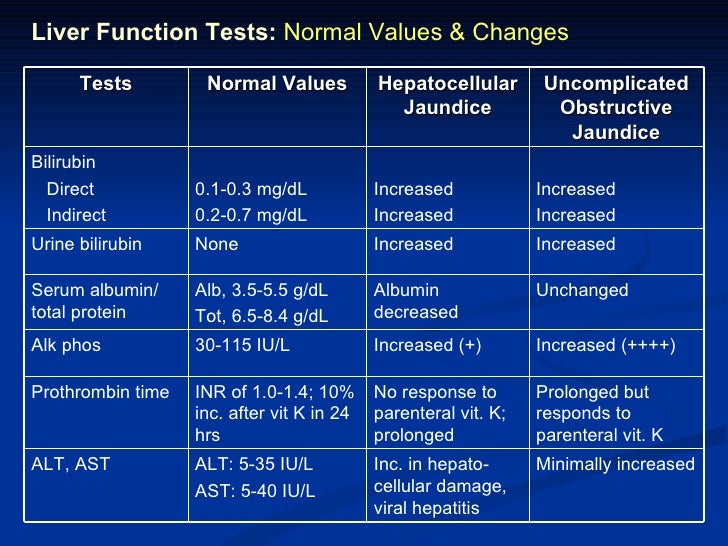 During the training, nurses in the Ryazan region improved their knowledge and skills in nursing care for a healthy and sick child with infectious and somatic pathology, prevention of somatic and infectious pathology in childhood in accordance with the regulatory framework, professional standards and clinical recommendations.
During the training, nurses in the Ryazan region improved their knowledge and skills in nursing care for a healthy and sick child with infectious and somatic pathology, prevention of somatic and infectious pathology in childhood in accordance with the regulatory framework, professional standards and clinical recommendations.
02/16/2023
WetLab
02/14/2023
BASIC EMERGENCY FIRST AID COURSE
02/14/2023
COURSE “METHODS OF NON-TEST PSYCHODIAGNOSIS OF PERSONALITY”
27. 09.2022
09.2022
Russian as a foreign language (speech practice course)
FDPO
06/02/2023
I Congress of Therapists of the Central Federal District
On June 8-9, Ryazan State Medical University will host a forum aimed at practical healthcare professionals. The organizers are RNMOT, the Ministry of Health of the Ryazan Region and the Ryazan State Medical University.
06/02/2023
In June, the second cycle of training “Fundamentals of Kinesiology Taping” starts
The cycle is intended for everyone, regardless of the presence or absence of a medical education. Listeners have the opportunity to get or improve the skill of using elastic bands, to learn everything or almost everything about teips!
29.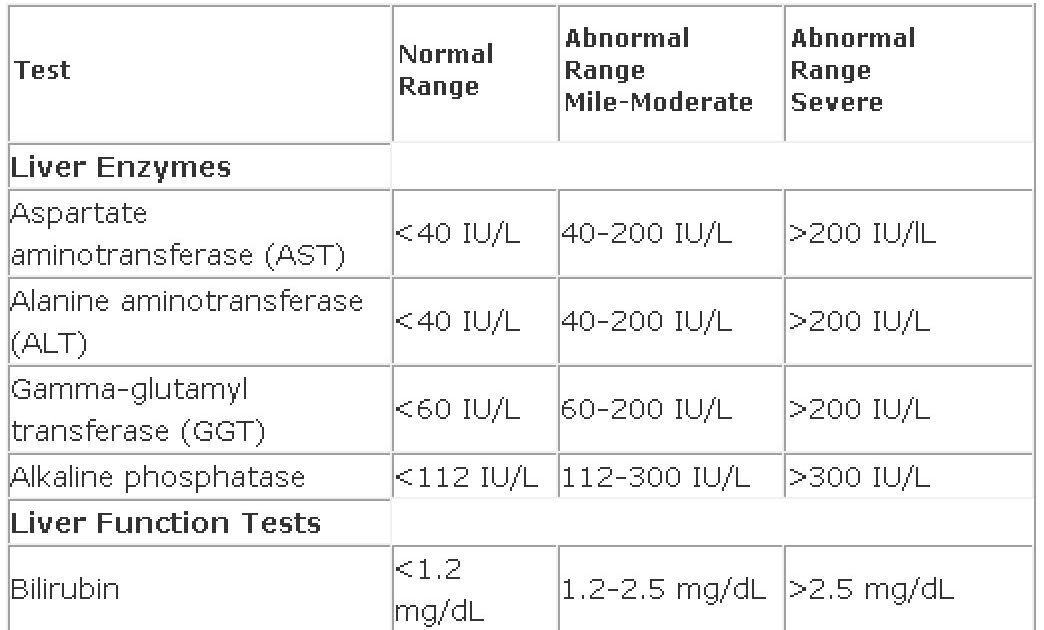 05.2023
05.2023
Physical and Rehabilitation Medicine in Pediatrics
On June 3, 2023, the University will host the Interregional Scientific and Practical Conference “Physical and Rehabilitation Medicine in Pediatrics”. Beginning at 10.00 in the hall of the Academic Council, at the address: Ryazan, st. Vysokovoltnaya, d. 7, bldg. 1, 4th floor.
05/25/2023
Mental health service: achievements and prospects
We invite you to take part in the IX Interregional Scientific and Practical Conference “Mental Health Service: Achievements and Prospects. Dedicated to the 135th anniversary of the Ryazan Regional Clinical Psychiatric Hospital. N.N. Bazhenov”, which will be held on June 2, 2023 on the basis of the Ryazan Regional Clinical Psychiatric Hospital. Bazhenova N.N.
Bazhenova N.N.
05/22/2023
WE INVITE YOU TO READ THE PROGRAM OF THE CONFERENCE “TOPICAL ISSUES OF THERAPY AND GENERAL MEDICAL PRACTICE”
05/18/2023
To the attention of graduates, students and residents!
The annual large-scale event at the Ryazan Medical University – Job Fair 2023 – will be held on Tuesday, May 23 at 11 am in the foyer of the first and second floors of the medical and preventive building (Vysokovoltnaya st., 7 building 1)!
05/17/2023
WE INVITE YOU TO JOIN THE ONLINE CONFERENCE
Dear Colleagues! 18 and 19May, the online conference “Psychological Research of Appearance and Body Image” is held by the Department of Clinical Psychology
05/17/2023
Day of the Lipetsk region in the Ryazan State Medical University
We invite graduates and students on May 18 to the Center for Culture and Leisure of the University for the “Day of the Lipetsk Region”.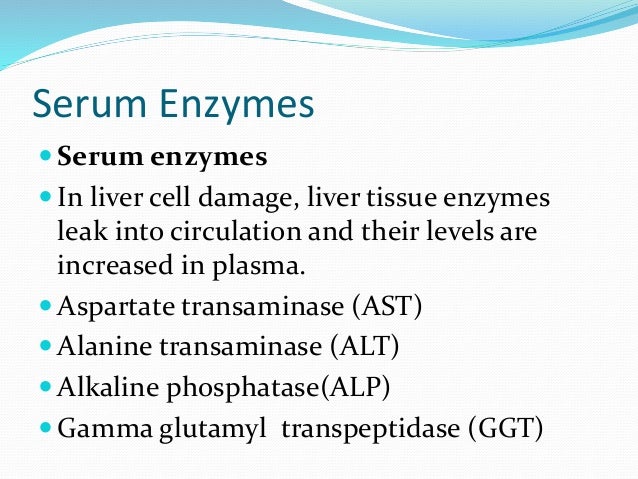

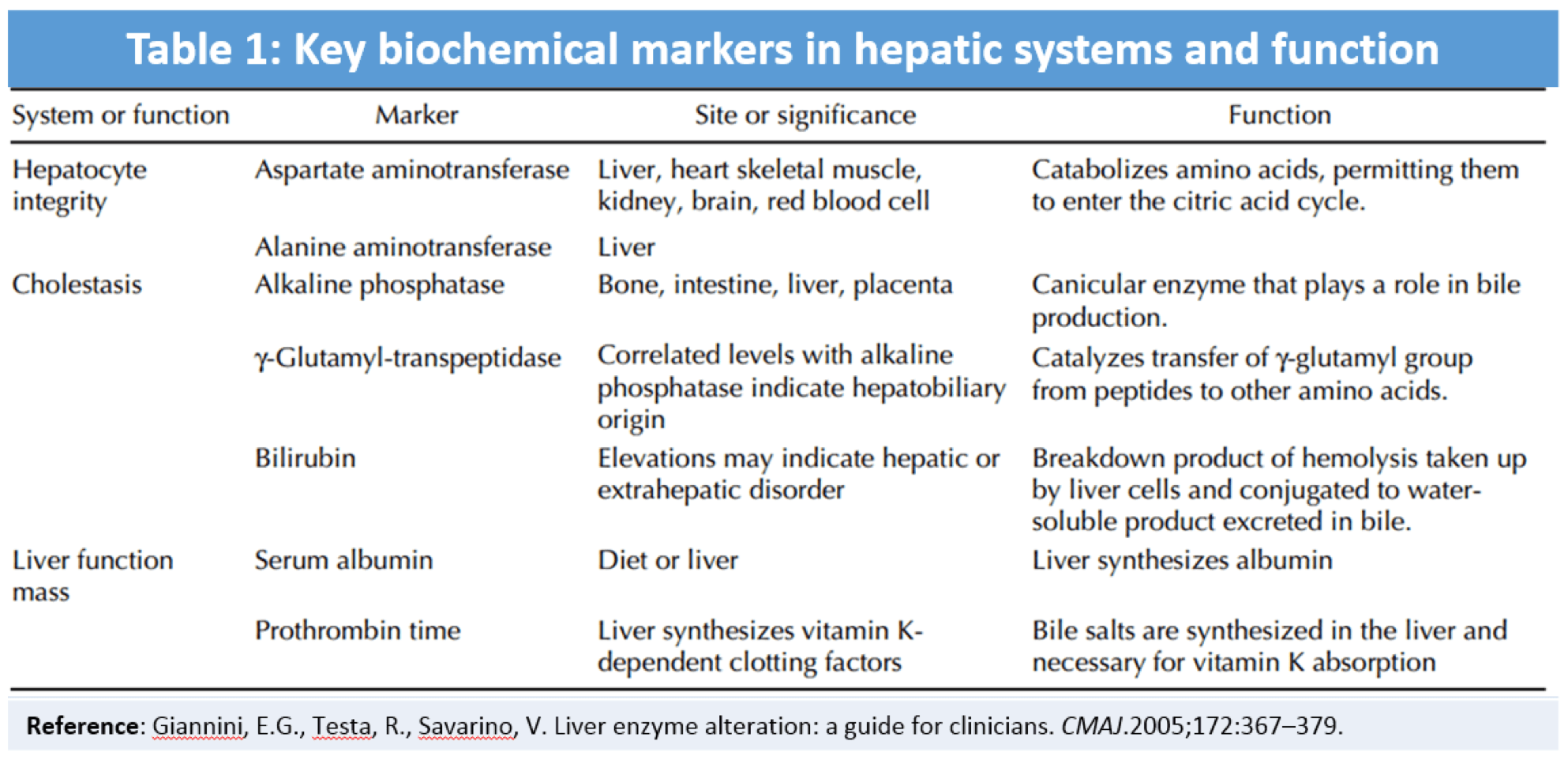 On the day of the procedure, non-carbonated water is allowed, and the day before the procedure, heavy food, carbonated drinks, strong coffee, tea and alcohol should be excluded from the diet.
On the day of the procedure, non-carbonated water is allowed, and the day before the procedure, heavy food, carbonated drinks, strong coffee, tea and alcohol should be excluded from the diet.